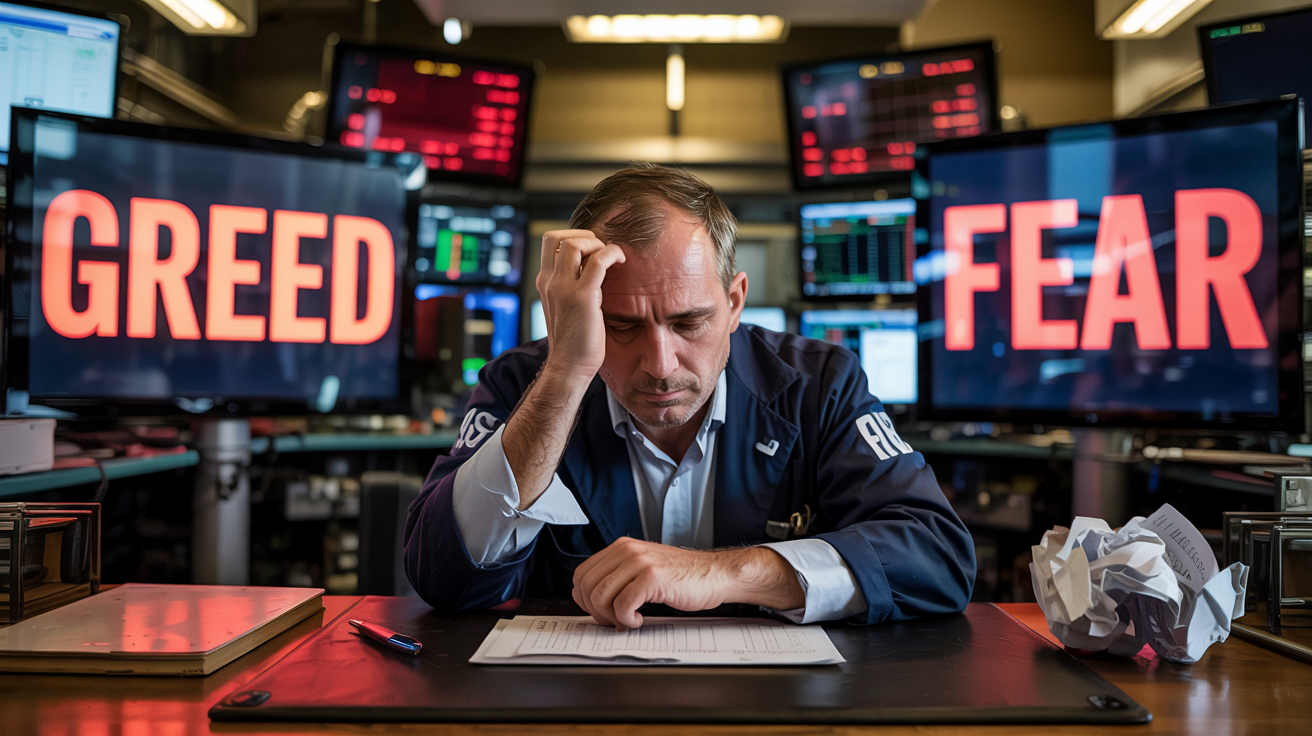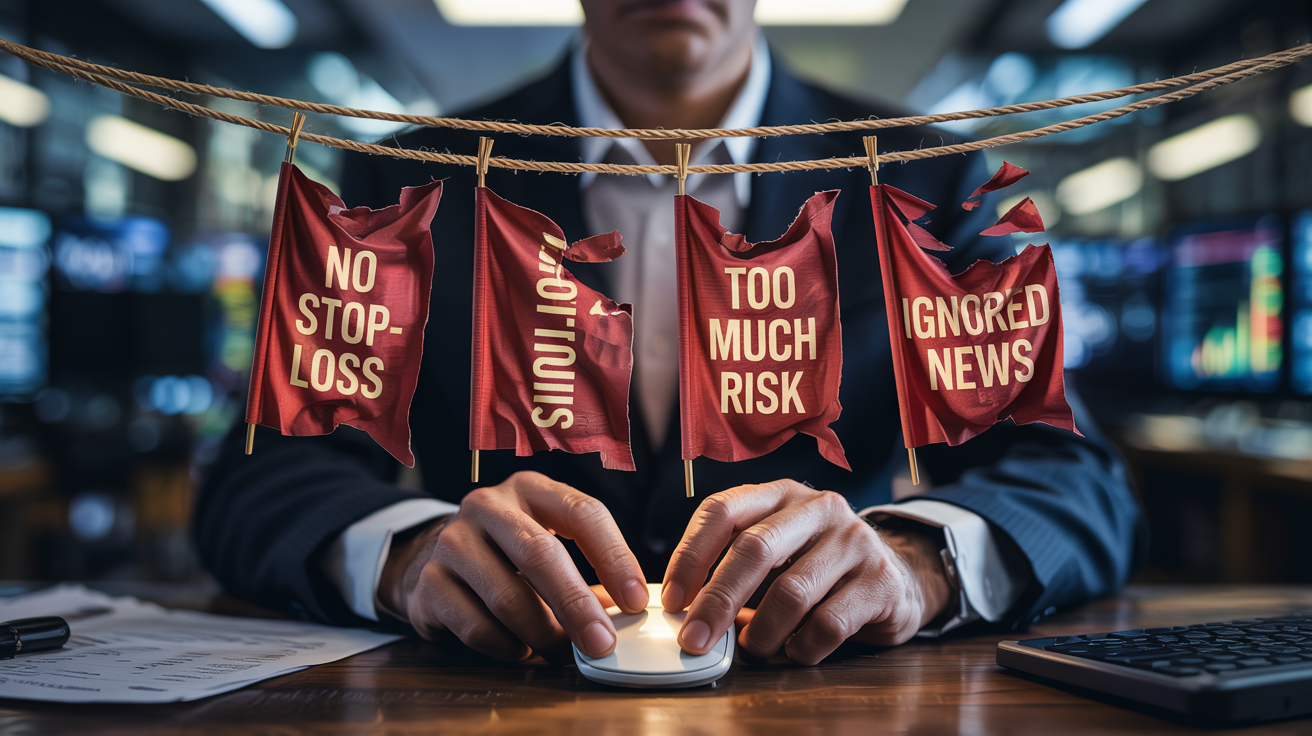Best Risk Management Techniques for Active Traders

Trading can be exciting, but without strong risk management techniques, even the best setups can become costly mistakes. Whether you’re trading stocks, crypto, or forex, smart risk management for active traders is what separates long-term winners from fast blow-ups.
In this guide, we’ll break down the best risk management techniques for active traders that help protect your capital, control emotions, and boost your trading success. From using the 1% rule to setting smart stop-losses and diversifying your portfolio, these strategies are simple but powerful.
No matter if you’re a beginner or an experienced trader, applying the right risk controls can change your trading game. Ready to protect your hard-earned money and make smarter trades? Let’s dive into the best ways to manage your risk like a pro in today’s fast-moving markets.
Why Risk Management in Stock Market Trading Really Matters
Risk management in the stock market means protecting your money when you trade. When you follow protective strategies, one bad trade won’t ruin your whole account. Many traders have lost a lot of money because they did not use proper risk management in their trades.
For example, a trader who does not plan well may risk all their money on one trade and lose it all. On the other hand, smart traders use trade protection in stock market strategies to limit their losses. They set rules and follow them to make sure that even if a trade goes wrong, their overall account is safe.
Real-life examples show that traders who stick to a plan and take safety steps have better results. They make small, careful trades and avoid big losses. In the world of stocks and crypto, it is very important to have a plan to protect your money.
What Is Active Trading and Why Does It Need a Strategy
Active trading means making quick trades to take advantage of price changes. When you do active trading, you buy and sell fast. This creates both chances for gain and risks for loss. Quick trades can be exciting, but they can also be dangerous without a plan.
That’s why having a clear plan is crucial for active trading success. Every trade you make should have a plan. This plan must include ways to stop a loss if the market goes the wrong way. It also helps you keep your emotions in check. A clear strategy makes active trading less risky.
By thinking ahead and setting clear limits during active trading, you can decide before a trade what your limits are. This helps you take advantage of good opportunities without risking too much money.
The 1% Rule in Trading: A Simple Way to Limit Losses

One of the simplest rules in trading is the 1% rule. This rule says you should not risk more than 1% of your total money on a single trade. For example, if you have $10,000 in your account, you should only risk up to $100 on one trade. This is a key part of staying safe while you trade.
The 1% rule helps keep losses small. By risking only a little on each trade, you can protect your overall account. This rule is easy to follow and is one of the best risk management techniques for both stock trading and crypto trading. When you use the 1% rule, you have a clear limit, and your money is safer even when the market is volatile.
Planning Your Trades: “Plan the Trade, Trade the Plan”

Good trading starts with a plan. When you plan your trades, you are using smart risk management techniques to avoid big mistakes. The old saying “Plan the trade, trade the plan” means you should decide your moves before you act.
Planning your trades means setting clear entry and exit points. This is done with stop-loss and take-profit orders. These tools help you stick to your plan and avoid making choices based on fear or greed. When you plan, you are more likely to follow your rules and use risk management trading strategies effectively.
Having a clear plan is especially important for active traders. Every trade should have a set of rules that tell you when to get in and when to get out. This helps you guard your account while trading stocks.
Stop-Loss and Take-Profit: Your First Defense Against Risk
Stop-loss and take-profit orders are two of the most important tools in trading. A stop-loss order tells your broker to sell your trade if the price drops to a certain level. A take-profit order tells your broker to sell your trade when the price reaches a set profit target.
These orders act as a shield for your money. They protect you from panic decisions. When you use stop-loss and take-profit orders, you have a clear plan for every trade. This should be a part of every trader’s toolkit for staying safe. They work well in both stock trading and crypto trading.
By setting a stop-loss, you make sure that you do not lose too much if the trade goes wrong. Similarly, a take-profit order ensures that you secure your gains when the market moves in your favor. These are simple yet powerful risk management techniques that every trader should use.
How to Set Smart Stop-Loss Points with Moving Averages
One way to set smart stop-loss points is by using moving averages. A moving average shows the average price of an asset over a set time. It’s a helpful method when trying to stay safe in stock trading.
For example, you can use a longer moving average for volatile assets like crypto. This means you give the trade more room before the stop-loss order is triggered. Using moving averages can help you choose a good stop-loss point that pro`tects you from minor price swings. It is a smart way to use risk management techniques and keep your trading safe.
A tip for setting stop-loss points is to look at the trend. If the price is rising steadily, you can set a stop-loss a little below the current price. If the market is choppy, use a longer moving average to give the trade room to breathe. This method helps you avoid false signals and supports your overall risk management trading plan.
Calculating Expected Return: Is This Trade Worth It?

Before making a trade, it is smart to check if the trade is worth the risk. You can do this by calculating the expected return. The formula is simple:
Expected Return = (Chance of Win × Gain %) + (Chance of Loss × Loss %)
This calculation helps you see if the potential gain is enough to cover the risk of loss. It’s a simple but powerful way to protect your account. By doing this math, you can compare different trades and choose the best one. This method is useful in both stock trading and crypto trading.
Checking your expected return is a smart way to keep your trading plan focused. It helps you make choices that are based on facts, not feelings. With this step, you ensure that every trade you make is measured and smart.
Diversifying to Manage Risk Across Stocks and Crypto
Diversifying your investments is another smart move to reduce losses. It means not putting all your eggs in one basket. By spreading your money across different stocks, sectors, or even crypto coins, you reduce the risk of one bad trade hurting you too much. It’s a well-known strategy used by stock traders to stay protected.
When you diversify, you protect yourself from sudden market moves. For instance, if one stock drops, another might rise and balance the loss. Diversification is a simple idea that can make your trading much safer. It is also a smart part of any risk management trading plan.
For example, if you invest in both stocks and crypto, you are less likely to lose everything if one market goes down. By mixing different types of investments, you can enjoy the benefits of each while keeping your overall risk low. This is one of the best ways active traders can stay disciplined.
Using Hedging to Reduce Big Losses
Hedging is like having a backup plan in trading. It means opening another trade that helps protect your main trade from a big loss. For example, if you own a stock and worry that it might drop, you can buy a put option. A put option gives you the right to sell the stock at a set price, reducing your loss if the stock falls.
Hedging is an extra layer of protection traders use to avoid big losses. It works well when market events, like earnings reports or news days, can cause big price moves. By using hedging strategies, you can limit your losses and keep your trading account safe.
This is a basic safety step used by many stock traders. It may seem a bit complex at first, but once you learn how to use hedging, you will feel more secure in your trades. Hedging adds an extra layer of safety to your trading plan.
How Emotions Can Wreck Your Trades Without a Plan

Emotions are one of the biggest enemies of traders. Feelings like fear, greed, and anger can lead you to make bad decisions. Without a clear plan, these emotions can wipe out your account. This is why good risk management techniques are so important.
When you have a set plan with clear rules, you are less likely to let emotions take over. Write down your rules and stick to them. For example, use stop-loss orders and take-profit orders to keep your trades safe. When you have a plan, you make choices based on facts, not feelings.
A simple way to keep emotions in check is to keep a trading journal. Write down why you made each trade and what happened afterward. This practice helps you learn from mistakes and build smarter habits over time. It shows that a clear mind is key to safe trading.
Crypto-Specific Risk Management Tips for Volatile Markets
Crypto trading can be much more volatile than stock trading. Prices can swing widely in a short time. This makes it even more important to use strong risk management techniques when trading crypto.
In the crypto world, using tighter stop-loss rules is wise. Also, keep your trade sizes small. Remember the 1% rule. Even though crypto can offer big gains, it also brings big risks. By following these rules, you can protect your money in both crypto trading and stock trading.
Crypto traders must diversify across different coins, too. Do not put all your funds in one digital asset. This approach helps you keep your portfolio balanced and steady. Even if one coin falls, others might hold steady. These simple steps help you manage risk in the fast-moving world of crypto.
Risk Management Mistakes to Avoid

Even with a plan, some common mistakes can hurt your trading. Here are a few errors to watch out for:
- Not Setting Stop-Loss or Take-Profit Orders: Without these orders, you risk losing too much money on one trade.
- Risking Too Much on One Trade: Always follow the 1% rule to keep your losses small.
- Ignoring Volatility or Market News: News and market swings can change the risk quickly. Stay informed.
- Overtrading After a Loss or Win: Emotions can push you to trade too much after a loss or win. Stick to your plan.
Avoiding these mistakes is part of solid risk management in stock market strategies. Use your plan and rules to guide you through every trade, whether in stocks or crypto. This will help you stay safe and focused over time.
Final Thoughts
Safe trading requires a plan that doesn’t leave money to chance. You’ve learned about risk management trading methods like the 1% rule, setting stops, calculating expected return, and diversifying. Each approach aims to protect your hard-earned capital from sudden drops.
Even if you’re skilled at picking promising trades, you won’t last without a plan for losing trades. That’s why risk management in the stock market and crypto arenas is so important. The market can be unpredictable, but the best traders stay consistent, follow their rules, and keep losses small. Develop your risk plan now, before you enter your next position. That way, you can trade with confidence and a level head.
